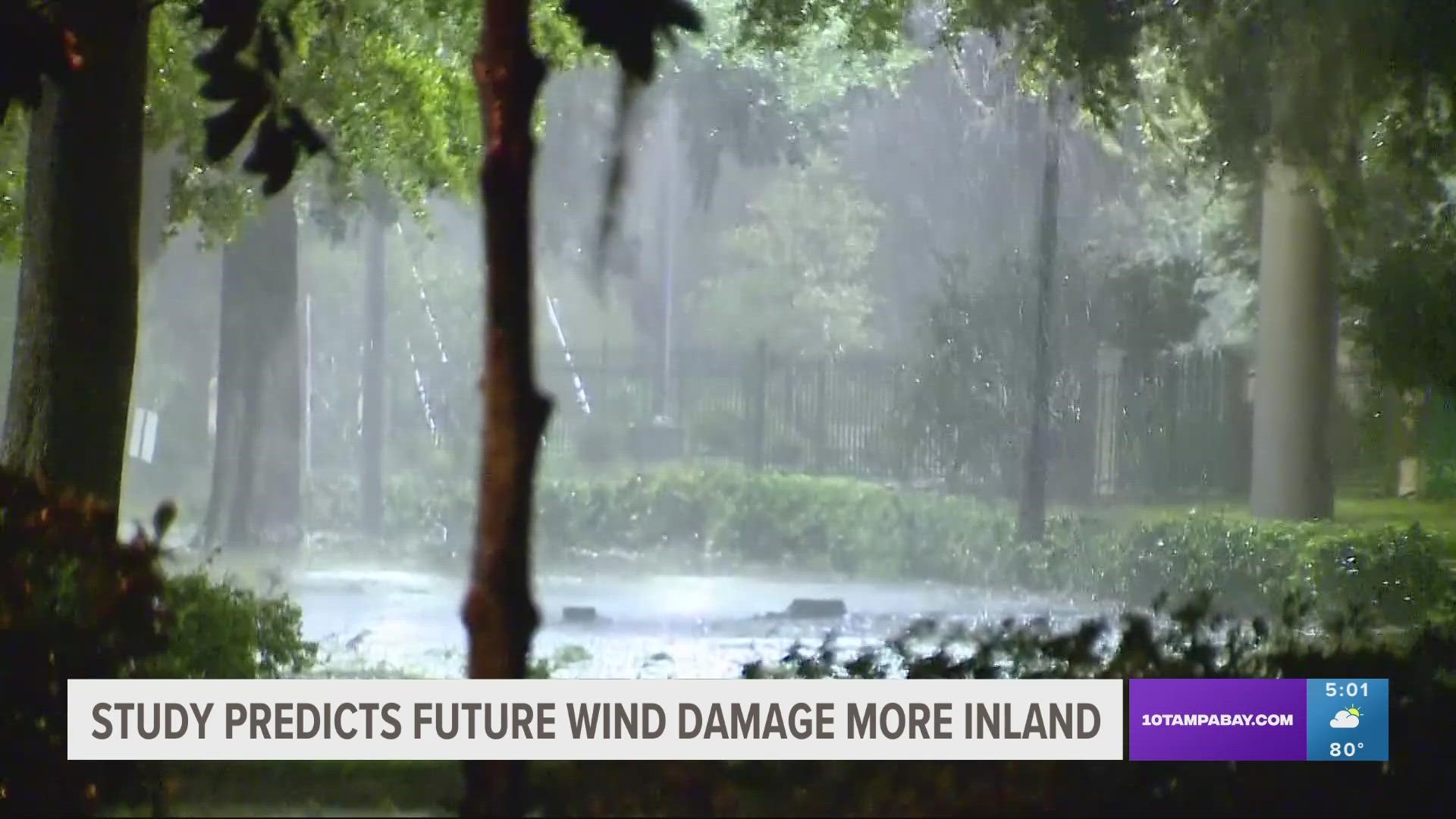ST. PETERSBURG, Fla. — Hurricane season. Whether you're new to Florida or a seasoned native, it's something everyone who calls the Sunshine State home has to deal with.
For some, it may feel like just a precaution to prepare every year, but a recent study shows that the damage from stronger, more powerful hurricanes is forecast to become much greater and more expensive.
Florida is expected to receive the brunt of the risk factors associated with these forecasted stronger storms, but the effects are also expected to reach parts of the United States that haven't typically been impacted by hurricanes.
The main factor fueling these predictions — worsening wind speeds.
A study just released by the nonprofit First Street Foundation suggests worsening wind speeds will account for much of the damage associated with hurricanes. The damage itself will also be greater, the study shows.
Over the next 30 years, First Street Foundation predicts tropical cyclones are more likely to develop into major hurricanes with greater intensity that reaches farther inland than ever before.
But it's not just Florida that has to worry about the worsening effects of tropical cyclones — the risk extends further north along the East Coast and west along the Gulf Coast.
"While wind exposure and damages are most significant along the coast, they are likely to increase inland drastically in many places that have never before been exposed," First Street Foundation said. "Additionally, over the next 30 years, tropical cyclones will push further northward before making landfall."
Here are four key findings the study revealed:
- Hurricanes are tracking farther northward.
- The largest increase in maximum wind speed will impact states in the Mid-Atlantic.
- Increased wind speeds put billions of dollars at risk annually in the South.
- Florida accounts for more than 70% of the entire nation's risk.
Within the next 30 years, the study predicts the expected Average Annual Loss as a result of this growing risk will increase from $18.5 billion to $19.9 billion. Additionally, 13.4 million properties will likely experience tropical cyclone wind risk that currently doesn't face that risk now.
The study called the economic risk in Florida "most alarming," especially considering current levels of expected annual losses are already over four times the economic risk of the rest of the Gulf Coast and account for about 73 percent of all expected damages nationally.
"Of the approximately $41-70 billion in losses due to Hurricane Ian in 2022, it is estimated that half of those damages ($23-35 billion) were due to wind damage (Core Logic, 2022)," the study said in part.
For more information on the study and to download the full report, click here.

